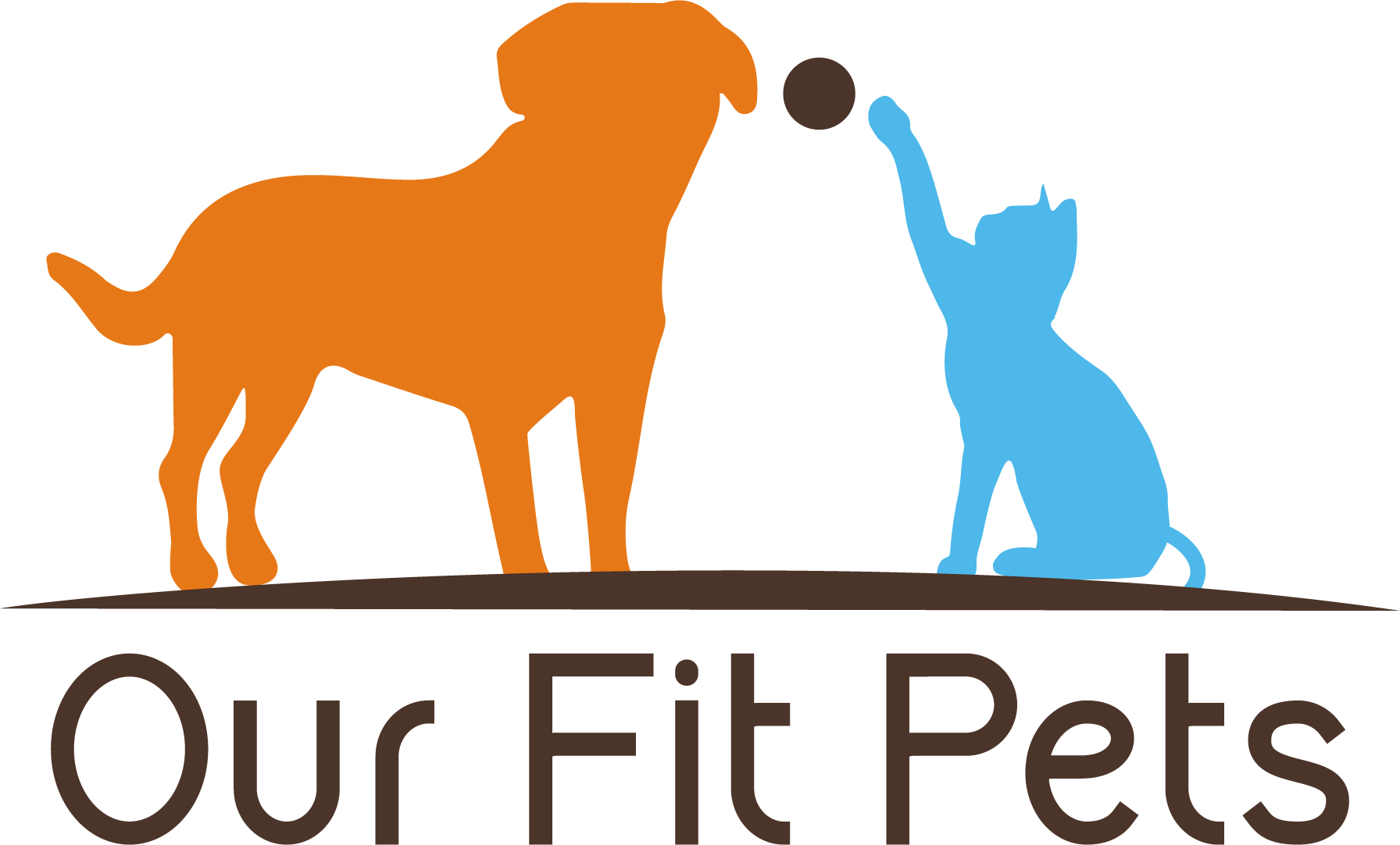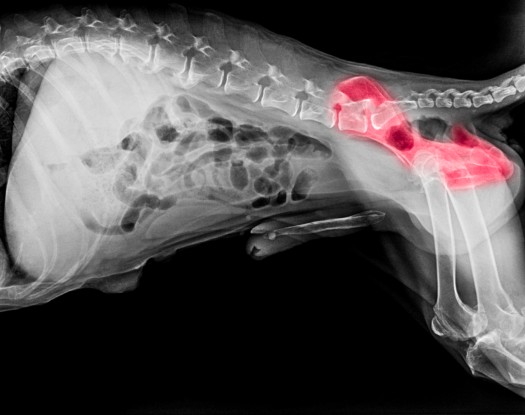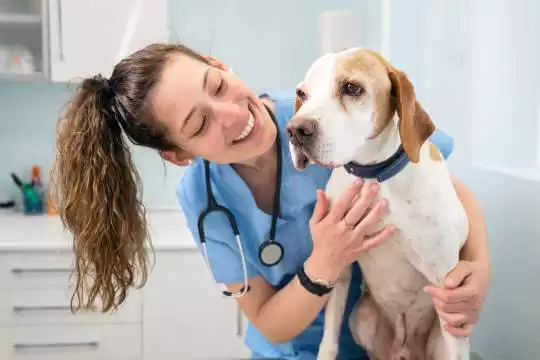Connect with a verified veterinarian in minutes. Licensed vets are available 24/7 to answer your questions. No need to worry about your furry family member.
Hip dysplasia is the hip malformation or skeletal condition that occurs during growth. This joint (hip joint) works as a ball and socket; the head of the femur and acetabulum must develop simultaneously. The looseness of the hip joint occurs during puppyhood due to the absence of consistent growth. It may lead to the development of osteoarthritis or degenerative disease.
Which breeds are prone to hip dysplasia?
Hip dysplasia mainly occurs in larger breeds of more than 50Ibs or 22 KG, but smaller breeds like French bulldogs and Pugs can also undergo this condition. The following breed can have this condition:
- Labrador
- German Shepherds
- Great Danes
- Boxers
- Australian shepherds
- Pitbulls
Causes of hip dysplasia
Genetics is a significant factor in chronic hip dysplasia. If parents have CHD, the puppies can get it from the parents. The causes are as follows:
- Hormone imbalance
- Insufficient exercise: there are huge risks involved in producing hip dysplasia when your dog gets improper or too much exercise
- Improper weight and nutrition: obesity-heavy weight can cause hip dysplasia because it puts more pressure on joints in older age
- Accelerated growth rate: the balanced diet is essential for your dogs. The specific nutritional food can restrict excessive growth and avoid hip dysplasia

Review symptoms, medications & behavior to keep your pets healthy with a Vet Online in just minutes.
Ask a Vet Live NowSign and Symptoms
Symptoms of hip dysplasia may base on the severity of the disease, joints looseness, age and size of the dog, and how long the dog has had hip dysplasia
- Decreased activity
- Pain and weakness in hind legs
- Stiffness in back legs
- Reduction in range of motion
- Chronic or occasional lameness in the rear end
- Stiffness or limping
- Face difficulty while running, jumping, climbing stairs, and performing physical activities
- Joints grating
- Looseness in joints
- Abnormal sitting position
- Bunny hopping
How to treat hip dysplasia in dogs?
Early diagnosis is necessary to tackle the initial stage of arthritis caused by hip dysplasia in dogs. An orthopedic evaluation should be done before determining the treatment or medical management. There are various choices to treat hip dysplasia in dogs.
Exercise
Puppies and young dogs need exercise to strengthen their muscles and control their weight for healthy joints. Must create an exercise plan to avoid hip dysplasia. Swimming is a valuable exercise for hip dysplasia.
Orthopedic braces
If your dog cannot undergo surgery, several other non-invasive options are available for management. Ortho Dog’s Hip Hound Brace gives support to reduce the pressure on joints. It provides stability and permits post-surgical healing. It is bracing along with exercise help to lessen the disease progression.
Physical therapy
Physical therapy is essential for weight loss, joint and muscle health, and mobility.
Massage
The massage can improve muscle functions, but it is a temporary relief. It is effective for flexibility, loosening muscle fibers, and relaxing your pet.
Medical management
Non-steroidal anti-inflammatory drugs are pain medications that help reduce pain and swelling. Some injectable therapies, such as polysulfated glycosaminoglycan, help improve joint health.
Laser therapy treatment
Laser therapy is a non-invasive treatment; that provides relief from pain by quieting nerve cells. It is a photostimulation process that penetrates deep into body tissue and promotes chemical reactions by opening blood vessels. Laser treatment naturally develops endorphins to elevate pain and reduce swelling. Laser therapy can also help after surgery and is helpful for post-surgical healing.
Surgical options
Sometimes surgical interventions are profitable for a dog’s quality of life, but you must consider other factors before making a surgical choice.
- Juvenile pubic epiphysiodesis
It is a joint-protecting process for dogs of about 18 weeks of age.
- Triple pelvic osteotomy
Dogs ten months of age can undergo this procedure. The most common surgeries utilized to treat hip dysplasia are:
- Femoral head osteotomy (FHO)
This surgery is primarily helpful for mature dogs. It works by cutting the femoral head of the hip joint. At the same time, the normal functioning of the hip joint is not restored by FHO. This strategy is successful for pain management.
- Double or triple pelvic osteotomy
DPO/TPO is usually done in young dogs around ten months of age. The pelvic bone is to cut and move the segments to improve joint health.
- Total hip replacement or THR
Complete hip replacement is done while performing surgery. The entire joint is replaced by plastic and metal implants.
What will be the cost of surgery?
The cost of surgery may depend on some factors like:
- Type of procedure
- Size, age, and breed of your dog
To manage the conditions, about 50-200$ may be the cost per month of medication.
How to prevent hip dysplasia in dogs?
“Prevention is better than cure” Hip dysplasia is a genetic condition, and several dogs of larger breeds are born with this disorder. You should visit your vet and have regular checkups to determine a healthy weight. Provide supplements to the dog starting from the age of 3 months.
Connect with a verified veterinarian in minutes. Licensed vets are available 24/7 to answer your questions. No need to worry about your furry family member.

Tom
Tom has always loved to write since he was little - he wanted to be either a writer or a veterinary doctor, but he ended up being a professional writer while most of his works are based on animals. He was born in San Francisco but later moved to Texas to continue his job as a writer. He graduated from the University of San Francisco where he studied biotechnology. He is happily married and a soon to be father!
Review symptoms, medications & behavior to keep your pets healthy with a Vet Online in just minutes.
Ask a Vet Live Now

